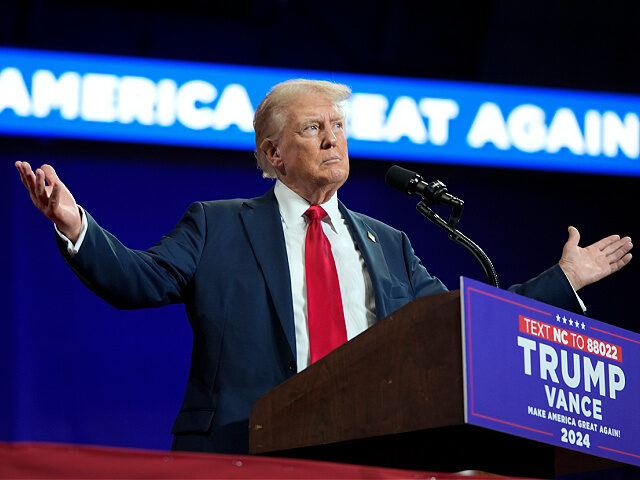In the tense final days leading up to the 2024 presidential election, a quiet confidence began to build. Surprisingly strong poll numbers, large early voting turnouts, and an anxious Democratic Party all signaled that something was different this time. It felt as though the nation’s foundation was shifting—not dividing, but uniting.
This shift was so profound that when Donald Trump was declared the winner, it seemed less like a victory for him, the Republican Party, or the MAGA movement, and more like a triumph of American unity over divisive politics.
Voters of all ages, backgrounds, and regions came together to give Trump 312 electoral votes and a decisive win in the national popular vote. His victory spanned across nearly all regions and demographics.
Trump became the first candidate in 40 years to sweep all seven swing states, outperforming his 2020 results in almost every state and 2,367 of the nation’s 3,243 counties and townships, according to New York Times data. He saw improvements in urban counties by 5.2 percent, suburban counties by 4.3 percent, younger counties by 5.6 percent, and older counties by 4.9 percent. In counties with at least a 25 percent Black population, his support rose by 4.1 percent, and in counties with at least a 25 percent Latino population, it increased by 9.5 percent.
This surge led to significant shifts even in traditionally Democratic states. Trump narrowed the gap in New Jersey from a 16-point loss in 2020 to a 5-point difference in 2024. In Illinois, his deficit shrank from 16 points to 9, while New York and California moved 12 and 10 points to the right, respectively, based on the latest data.
The main driver behind this shift was the overwhelming support Trump received from traditionally Democratic voters. Exit polls revealed that he won 46 percent of Hispanic voters, including 55 percent of Hispanic men. His support among Black men doubled to 24 percent in 2024, and he secured nearly a third of all voters who identified as non-white.
Young voters, another key Democratic group, also swung significantly toward Trump. Forty-six percent of voters under 30 chose him, as did 52 percent of men under 45. Trump carried middle-aged voters with a 52-47 margin and seniors with a 51-48 margin.
This broad support across age groups, races, and regions reflects a major socioeconomic shift in the country. For over a century, the Democratic Party was seen as the champion of the working class, but that image has clearly changed. Vice President Kamala Harris won majorities among voters earning less than $25,000 or more than $100,000 per year, but Trump won everyone in between. Among the 58 percent of voters earning between $25,000 and $100,000, Trump received 52 percent of the vote.
This suggests a fundamental realignment not only in electoral politics but potentially in American society as a whole. For much of the 21st century, Americans have been divided by race, ethnicity, gender, and sexuality, often with a focus on narratives of systemic bigotry. To gain and retain political power, Democrats have categorized people into two groups: oppressors and the oppressed. Racial minorities, LGBTQ+ individuals, and women were frequently told they needed Democratic protection from the dominance of straight white men. Unsurprisingly, many of these men were the first to move away from the Democratic Party, but the speed at which other demographic groups are following is striking.
It appears that Black and Latino voters are increasingly frustrated with life in high-crime, low-income neighborhoods long controlled by Democrats, while women of all backgrounds are rejecting the notion that abortion is their primary political issue. Younger voters, especially men, have always had a tendency to push back against authority. Traditionally, academia, government bureaucracy, corporate America, and Hollywood were popular targets for this energy, but now, all these institutions align closely with the Democratic Party, consistently reinforcing left-wing views for widespread acceptance.
Voters of all ages have increasingly seen through these narratives, rejecting them in unprecedented numbers. Only six percent of Americans report a strong trust in television news, while 56 percent have little or no trust in it. Similarly, just seven percent trust newspapers, compared to 48 percent who do not. What was once evident left-leaning bias in coverage has now become open propaganda, and Americans are taking notice.
However, the media is merely the most visible institution under leftist influence. Trust in nearly all other major institutions has also plummeted. Just six percent of Americans place much faith in big business, while 42 percent have little to none. Only 18 percent have confidence in higher education, compared to 32 percent who do not. Public trust in the healthcare system, organized labor, public schools, and the criminal justice system is similarly low, all of which have been under liberal leadership for years.
The widespread and justified belief that these institutions have misled the public and acted against its interests coincides with what many see as the failures of the Democratic government they’ve long supported. With soaring prices on basic goods, rampant street crime, and cities struggling with surges of illegal immigration, two-thirds of voters now believe the country is on the wrong track.
In simple terms, these voters have grown tired of Democratic leaders letting them down and Democratic-aligned institutions misrepresenting the truth. To these Americans, Trump represented not just a change in leadership but a shift in American culture. They were frustrated with media propaganda, academic indoctrination, corporate “diversity, equity, and inclusion” agendas, corruption in healthcare, selective justice, and a broader surrender to “woke” ideology.
These voters don’t want to be divided along demographic lines; they want unity rooted in values that have historically upheld American society: liberty, equality, hard work, family, faith, and community. They yearn for institutions and leaders who embody these principles instead of disparaging them. That’s ultimately why Trump won such a decisive victory—because he and the MAGA movement symbolize a return to a nation where Americans may lack trust in institutions, but they always retain faith in each other.
The vision of a unified country appeals to all, but many believed it was impossible as long as Democrats kept Americans divided against each other. Trump revealed this divisive strategy simply by being the focal point. Democrats’ final message before the election was to label him—and by extension, his supporters—as fascists. This wasn’t a genuine argument; it was emotional coercion, and Americans saw through it.
Record numbers of people from all backgrounds and regions rejected this divisive politics, instead finding unity in a return to the country’s founding principles. Trump’s victory is straightforward—it signifies a broad desire to move beyond polarization. However, it also marks a profound political and cultural shift that could reshape America for generations.











